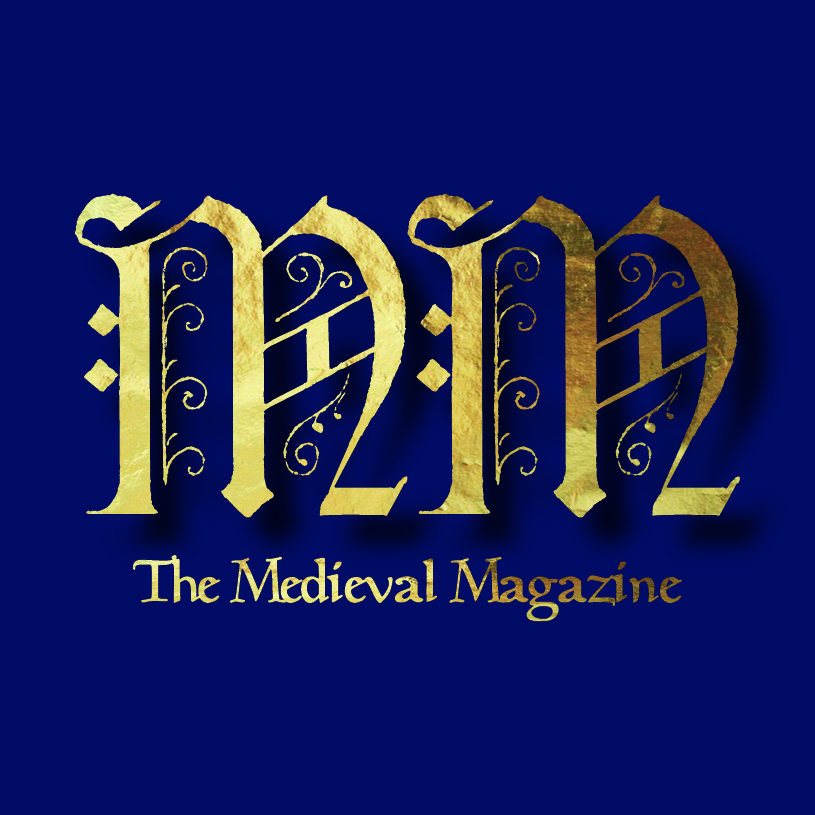New Exhibition at The British Museum! Thomas Becket: Murder and the Making of a Saint
By Sandra Alvarez
Credit: Reliquary casket showing the murder of Thomas Becket. Limoges, France, about 1180-1190. © Victoria and Albert Museum, London.
Made less than 20 years after the murder, this enamelled casket once contained Becket’s relics, either bits of his bone or blood-soaked clothes. The lower panel depicts three knights rushing towards Becket, who prays at an altar. Horrified monks watch as one of the knights strikes the fatal blow. In the panel above, Becket’s body is lowered into a tomb and his soul is carried to heaven.
An exhibition on the life of England‘s most famous saint, Thomas Becket, has opened after indoor gatherings have been permitted again in England. The exhibition, Thomas Becket: Murder and the Making of a Saint, running from May 20 – Aug 22, 2021, was initially planned for October 2020 to coincide with the 850th anniversary of Becket’s death but had to be postponed due to the coronavirus pandemic. The exhibition takes visitors through Becket‘s life, highlighting his rapid rise to Archbishop of Canterbury, his troubled relationship with King Henry II, and ultimately, his murder at the hands of four of Henry’s knights.
The son of a well-to-do merchant, Thomas Becket was born in Cheapside, London in 1120. He attended grammar school and then went on to Paris to study for a short time, but did not complete his education. Far from living a quiet religious life, Becket ended up becoming a clerk to help his father when the family’s fortunes faltered. This is where the tide turned for Becket; he was employed as a clerk in the house of Theobald of Bec, the Archbishop of Canterbury. Thanks to this connection, Becket was able to return to his studies in Canon Law and managed to quickly rise in the church ranks. Theobald took notice of him, and recommended Becket to Henry II….the rest, as they say, is history. Becket’s fame soared after his murder and he was canonized a scant two years after his death. His legacy was far-reaching, so much so that after Henry VIII broke with Rome in 1533, he took great pains to crush Becket’s cult and destroy his saintly status. Becket was no longer seen as a saint but perceived as a rebel and a threat because he had become a symbol of rebellion against the power of the king.
Rescued from Destruction: Becket’s Legend Grows
Skull relic and reliquary of Thomas Becket, 12th century. © British Jesuit Province
In spite of these attempts to malign Becket, his popularity never truly waned, and fortunately for us, many artifacts depicting his life and martyrdom were saved. The British Museum’s Thomas Becket: Murder and the Making of a Saint, attests to his cross-cultural and lasting appeal by featuring many of these rescued artifacts. On display are over 100 items, including several stunning reliquaries, objects from France and far-flung places demonstrating the interest and level of devotion Becket’s story evoked. The British Museum’s exhibition on Becket’s life boasts a collection of unique pieces, such as one of the first manuscript illustrations of Becket‘s murder, several books mentioning Becket that were defaced after the Reformation, and a strange surgical instrument case commissioned by Henry VIII for his royal surgeon, Thomas Vicary, depicting Becket’s murder.
Must-see Treasures
Credit: Reliquary casket, c.1220–50 from Hedalen Stave Church, Norway. By kind permission of Hedalen Stave Church.
Some other curious objects to keep an eye out for are: the beautifully illustrated manuscript pages from The Becket Leaves that detail his exile in France and subsequent return to England. The golden thirteenth-century reliquary decorated with dragon’s heads from Norway depicting Becket’s martyrdom, and a magnificent ivory cup that purportedly belonged to Becket and was later gifted to Katherine of Aragon in 1513. Becket’s personal seal is on display, as is a rare piece of carved marble from his shrine. There are intricate pilgrims’ badges and moulds of Becket, as well as flasks that held what was known as ‘St. Thomas’s water’ – the diluted blood of the saint imbibed by pilgrims and then brought back to cure sick relatives, because Becket’s blood was believed to have miraculous powers. Other must-see items include the stunning 800-year-old miracle windows on loan from Canterbury Cathedral, a reliquary skull fragment belonging to the saint, and an alabaster altarpiece showing Becket’s consecration in 1162. In terms of interactive features, not much can be done due to COVID restrictions preventing people from touching and engaging physically with exhibitions, but there is one video running on repeat that summarizes Becket’s murder for those who are unfamiliar with his story.
Credit: Miracle window, Canterbury Cathedral, early 1200s. © The Chapter, Canterbury Cathedral.
These six panels tell the sensational story of Eilward of Westoning, a peasant who is blinded and castrated as a punishment for stealing. After praying to St Thomas, Eilward’s blindness is healed and his testicles miraculously grow back.
My only complaint is a small one: the exhibition space. The decoration is rather sparse, but then again, I’ve not been keen on the layout of most exhibitions in the Great Court Gallery because they are often oddly placed and empty feeling. Other than this minor quibble, the exhibition is remarkable. It covers over 500 years of history, from the rapid rise and fall of this legendary saint and the events leading up to his horrific murder in Canterbury Cathedral on December 29, 1170, to his enduring popularity across the centuries. The artifacts on display paint a picture of an extraordinary life and legacy. Thomas Becket: Murder and the Making of a Saint is well worth the visit.
Plan Your Visit
The exhibition runs from May 20 – August 22, 2021
Tickets: Adults from £17, Members and under 16s free
Location: Room 35, The Joseph Hotung Great Court Gallery
Time: Daily: 10.00–17.00 (Fridays 20.30)
Book Your Ticket here
Love the Middle Ages? Want to learn more?




